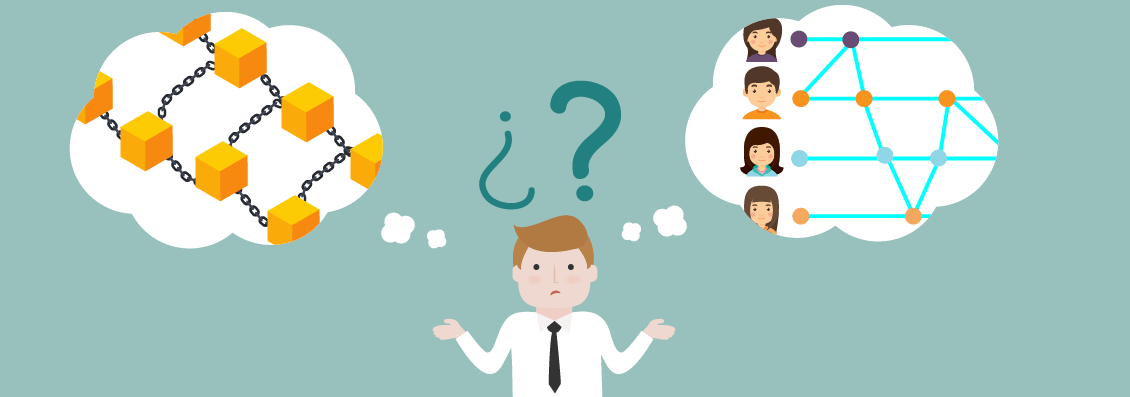While most of the world is still trying to get their heads around the blockchain concept, there are people who have already found its weak spots and are looking for ways to make it better. We have already written about the Lightning Network, a protocol designed to take care of the blockchain scalability problems.
At the same time, there are still others who, recognizing the great advantages of blockchain, are working on an own technology. Their solution leverages the blockchain benefits – decentralization, distributed architecture, consensus-based transaction processing – and simultaneously resolves the common blockchain issues of scalability, performance, and security. We are talking about Hedera Hashgraph, a new platform of distributed consensus for quick and efficient transaction processing without intermediaries.
We decided to do our research on the Hashgraph technology after attending the Hashgraph meetup on June 11, 2018. What was especially great about this event is that we had a chance to meet and talk to Paul Madsen, the Technical Lead at Swirlds Inc., the company developing the Hashgraph technology. Paul’s insights about the Hashgraph opportunities and the ways it can influence the global distributed ledger adoption prompted us to do a deeper study of this concept.

What is wrong with blockchain?
If blockchain is so great and revolutionary, why would anyone even bother to build anything else? True, the blockchain technology has already proved its advantages as a decentralized network supporting fast, efficient, and secure transactions. Blockchain requires no intermediary to process transactions, thus, their cost is lower. One of the main concepts of blockchain is the immutability of records which allows reaching unprecedented degrees of traceability and transparency.
These advantages have been widely recognized and accepted. The blockchain technology has laid the foundations for such widespread innovative concepts as cryptocurrencies and initial coin offerings. Moreover, the principles of blockchain are adopted in such industries as power and energy, insurance, real estate, agriculture, and many more.
However, blockchain does have its issues, and their effect is becoming increasingly pronounced. Some of these issues are what the Hashgraph developers are committed to resolve:
- High cost. While cost-effectiveness is considered one of the major advantages of blockchain, there are, in fact, two sides to it. Of course, processing transactions in a decentralized network with no intermediaries is much less expensive than the usual way – with banks, lawyers, institutions, underwriters, and so on. On the other hand, the transaction cost in blockchain is growing to the unacceptable level due to its Proof-of-Work concept. The PoW principle is the keystone of the blockchain formation, however, it results in a huge waste of computing power. The roots of this problem are in the way the so-called “mining” works. In order to add a new block to the blockchain, miners need to solve a mathematical problem. The first one to do it can add the block and get the reward.
Obviously, the miner with a more powerful set of equipment will win this contest, thus the mining hardware gets increasingly more energy-consuming as the blockchain grows. The mining costs are transferred to the users who are required to pay the ever-rising transaction fees.
- Poor scalability. The scalability problem is one of the major bottlenecks of the blockchain applications. As the network grows, each node requires more space to store the blockchain data and the bandwidth needed to process the increasing volume of transactions is getting higher, too. This results in rather low performance – for example, the Bitcoin blockchain can process only 7 transactions per second, and a new block takes about 10 minutes to create. The Ethereum blockchain is somewhat faster with about 15 transactions per second and 10 to 19 seconds to form a new block.
Obviously, this processing speed is far from efficient and has already caused a certain backlog of unconfirmed transactions. This forces the users either to wait for days until their transactions are processed or to pay higher fees for priority handling.
- Security issues. The blockchain consensus algorithm supporting the entire decentralized network can be susceptible to both outside DDoS attacks and faulty nodes breaking the consensus. Besides, in a blockchain, a consensus is never final, only the degree of confidence grows with time.
These issues are critical enough to have many teams around the globe working on different solutions. Hashgraph seems to have found a new approach to decentralized networks that may be able to address all the challenges the blockchain technology is facing now.

What is Hashgraph?
Hedera Hashgraph is another approach to distributed ledgers. Similar to blockchain, it is based on consensus, however, the way consensus is reached is different. In blockchain, the community decides on the block to add to the chain and discards all other blocks. As a result, the blocks form a single chain.
Hashgraph, on the other hand, is based on the so-called “gossip protocol” where the node packs the information on new transactions and the transaction information received from others into an “event” which is then sent to a number of random nodes. They repeat the process until all nodes in the network have the same information. Since the events contain not only the new information but the historical data, as well, all nodes finally synchronize all transaction data they have.
This way, no events are discarded and no work in wasted. This way, the Hashgraph platform is much faster and less cost-consuming, as it requires much less computing power and energy to process transactions.
Hashgraph solution to blockchain problems
In its whitepaper, Hashgraph claims to resolve all major problems that other distributed ledger technologies experience. The key point is their consensus principle – the gossip protocol which makes a lot of difference in terms of the overall network performance.
- Cost. Hashgraph requires no Proof-of-Work to run the network. This immediately reduces the costs for the users running the nodes as they no longer need powerful hardware. Consequently, the transaction processing costs are also lower, as nodes do not need to perform complicated computations to confirm transactions.
- Performance. Since Hashgraph only needs to inform the nodes of the transaction, it requires very little bandwidth to do so. While Hashgraph has not yet had a chance to show its performance in real-life situations, the tests demonstrated the capacity of 50,000 transactions per second. Compared to 7 transactions per second in the bitcoin blockchain, the improvement is truly significant.
- Security. Hashgraph claims to reach consensus with the so-called asynchronous Byzantine fault tolerance (aBFT). While blockchain requires Proof-of-Work to reach consensus, Hashgraph uses the Virtual Voting protocol instead. The aBFT prevents any member of the network from breaking the consensus. Besides, aBFT ensures that once the consensus has been reached, nothing can be changed anymore. The consensus is achieved in real-time and becomes final. This makes the Hashgraph-based networks resistant to DDoS attacks and maintains the system consistency even when some of the nodes become faulty or malicious.
Is Hashgraph going to replace blockchain?
If would be fair to say that it is still too early to make any fundamental conclusions about the Hashgraph technology. True, the tests have shown its advanced performance. In certain aspects, Hashgraph seems to excel the traditional blockchain approach. For example, its underlying principle requiring no Proof-of-Work makes it a perfect environment for microtransactions that are uneconomic in the current blockchain applications.
However, Hashgraph has not yet had a chance to show its capacity in a large network. While it claims to have a superior scalability potential, it can be proved only in a real application where the new platform can show its ability to scale according to both the number of users and the number of transactions to be processed.
At the same time, there is another concern that makes a lot of experts skeptical about any potential wide acceptance of Hashgraph – its patent. Swirlds Inc. has patented its technology, thus any use by third parties will require a permission. There are opinions that the patent is going to kill the entire concept of decentralization. When one entity holds a patent, it automatically means that it has full control over the entire network, which is contrary to the basic principles of decentralization.
In any case, the Hashgraph technology is still too young to make any far-reaching conclusions. Its principles deserve attention, and the global crypto community is closely following everything that the Hashgraph developers are doing. At the same time, we will be able to determine whether Hashgraph is truly a revolution of distributed ledgers only when we see it on a truly large scale in a real application.
Adoriasoft is keenly watching over the events and developments in the crypto sector. We are determined to research everything that has a potential of making a difference in this industry. Thus, we are going to follow the news about Hedera Hashgraph and share it with you. Make sure you subscribe to our blog to always be the first to know the hottest crypto news.